Asia · Food and Drink · Japan · Regions · Travel Miscellany
What to eat in Japan
Simple. Tidy. Fresh. These are the three adjectives we would use to describe Japanese cuisine. While many countries in Asia use a plethora of spices in their food, the Japanese prefer less complicated flavors, allowing the main ingredients and a few seasonings (commonly soy sauce, vinegar, and ginger) to speak for themselves. Even in a relatively small country, Japan has distinct regional specialties, but no matter where you go, the food presentation is part of the experience. Side dishes are served in separate little bowls, and entrees and soups look as if they have been arranged by a designer or artist.
 Some of the typical dishes you may already know from their adoption in Western restaurants: tempura, sushi, soba (buckwheat) and udon noodles, and miso soup. But there is much more to taste (and look at), and it varies by season. In spring, you’ll often see bamboo shoots used quite frequently. Chestnuts are harvested in the fall, so they are a popular ingredient in that season. Being a nation of almost 7,000 islands, it’s no surprise that seafood is a staple year round, no matter where you are in the country.
Some of the typical dishes you may already know from their adoption in Western restaurants: tempura, sushi, soba (buckwheat) and udon noodles, and miso soup. But there is much more to taste (and look at), and it varies by season. In spring, you’ll often see bamboo shoots used quite frequently. Chestnuts are harvested in the fall, so they are a popular ingredient in that season. Being a nation of almost 7,000 islands, it’s no surprise that seafood is a staple year round, no matter where you are in the country.
 Japan’s emphasis and access to seafood ensures it is some of the freshest you’ll ever eat. I highly recommend trying unagi, which is river eel grilled over charcoal and smothered in barbecue sauce. It’s delicious and harks back to old Japan. You’ll also likely see ramen on many menus, but don’t be fooled, this is not your college-microwave ramen. Although imported from China, Japan has made it all their own: noodles in a salty broth are mixed with a variety of ingredients such as thinly-sliced pork, onion, seaweed, hard-boiled egg, and more.
Japan’s emphasis and access to seafood ensures it is some of the freshest you’ll ever eat. I highly recommend trying unagi, which is river eel grilled over charcoal and smothered in barbecue sauce. It’s delicious and harks back to old Japan. You’ll also likely see ramen on many menus, but don’t be fooled, this is not your college-microwave ramen. Although imported from China, Japan has made it all their own: noodles in a salty broth are mixed with a variety of ingredients such as thinly-sliced pork, onion, seaweed, hard-boiled egg, and more.
 Tea is essential to the Japanese culture. Not only does the country produce high-quality green tea, which is well-known for its many health benefits, but the traditional tea ceremony is a beautiful ritual to witness. It takes years to master, so be sure to find an opportunity to learn about and watch this sacred cultural experience. And don’t forget to savor the fresh brews that await you at hotels and cafes. Even in remote areas, such as along the Nakasendo Trail hiking route, tea houses invite visitors to relax and refuel in a peaceful atmosphere before continuing on their journey.
Tea is essential to the Japanese culture. Not only does the country produce high-quality green tea, which is well-known for its many health benefits, but the traditional tea ceremony is a beautiful ritual to witness. It takes years to master, so be sure to find an opportunity to learn about and watch this sacred cultural experience. And don’t forget to savor the fresh brews that await you at hotels and cafes. Even in remote areas, such as along the Nakasendo Trail hiking route, tea houses invite visitors to relax and refuel in a peaceful atmosphere before continuing on their journey.
 Then there’s sake, Japan’s national beverage. While often called rice wine, sake is actually brewed more like beer. There are two types of sake: ordinary sake (most of the sake produced) or special-designation sake (the premium version). Premium sake is designated by the rice polishing ratio and the addition or absence of added alcohol. Some sake varieties include unpasteurized, undiluted, unfiltered, cloudy, clean, aged, and sweet. Just like tea, sake has it’s very own ceremony and accoutrements. Similar to beer and wine, sake has many different flavor notes, including fruits, floral, herbs, and spices.
Then there’s sake, Japan’s national beverage. While often called rice wine, sake is actually brewed more like beer. There are two types of sake: ordinary sake (most of the sake produced) or special-designation sake (the premium version). Premium sake is designated by the rice polishing ratio and the addition or absence of added alcohol. Some sake varieties include unpasteurized, undiluted, unfiltered, cloudy, clean, aged, and sweet. Just like tea, sake has it’s very own ceremony and accoutrements. Similar to beer and wine, sake has many different flavor notes, including fruits, floral, herbs, and spices.
 Now that your mouth is watering, your thoughts may be turning to sweet things. Japan makes some of the most colorful and artful sweets in the world. Wagashi are usually enjoyed with tea and are typically made from bean paste or matcha (green tea powder). Anmitsu is a traditional dessert with jelly cubes, fresh fruit, red bean paste, and a dark sugar syrup. Taiyaki are bean paste-filled cakes shaped like red snapper fish, which are considered to be good luck. There are also plenty of Western-style desserts, too, from ice cream to sponge cake. Your sweet tooth will definitely be satisfied!
Now that your mouth is watering, your thoughts may be turning to sweet things. Japan makes some of the most colorful and artful sweets in the world. Wagashi are usually enjoyed with tea and are typically made from bean paste or matcha (green tea powder). Anmitsu is a traditional dessert with jelly cubes, fresh fruit, red bean paste, and a dark sugar syrup. Taiyaki are bean paste-filled cakes shaped like red snapper fish, which are considered to be good luck. There are also plenty of Western-style desserts, too, from ice cream to sponge cake. Your sweet tooth will definitely be satisfied!
 We believe that experiencing local gastronomy is essential to discovering any culture, and we love sharing traditional foods and regional specialties with our guests. Douzo meshiagare! (Enjoy your meal!)
Matt Holmes is the Founder & President of Boundless Journeys. Boundless Journeys is an award-winning tour operator that goes off the beaten path for immersive and authentic travel experiences.
If you would like to be a guest blogger on A Luxury Travel Blog in order to raise your profile, please contact us.
We believe that experiencing local gastronomy is essential to discovering any culture, and we love sharing traditional foods and regional specialties with our guests. Douzo meshiagare! (Enjoy your meal!)
Matt Holmes is the Founder & President of Boundless Journeys. Boundless Journeys is an award-winning tour operator that goes off the beaten path for immersive and authentic travel experiences.
If you would like to be a guest blogger on A Luxury Travel Blog in order to raise your profile, please contact us.
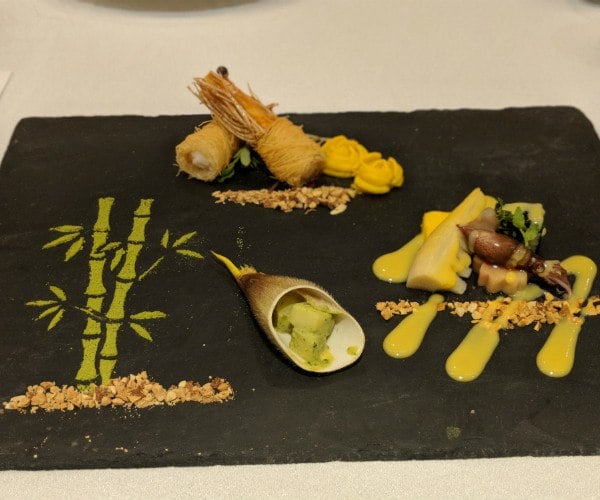 Some of the typical dishes you may already know from their adoption in Western restaurants: tempura, sushi, soba (buckwheat) and udon noodles, and miso soup. But there is much more to taste (and look at), and it varies by season. In spring, you’ll often see bamboo shoots used quite frequently. Chestnuts are harvested in the fall, so they are a popular ingredient in that season. Being a nation of almost 7,000 islands, it’s no surprise that seafood is a staple year round, no matter where you are in the country.
Some of the typical dishes you may already know from their adoption in Western restaurants: tempura, sushi, soba (buckwheat) and udon noodles, and miso soup. But there is much more to taste (and look at), and it varies by season. In spring, you’ll often see bamboo shoots used quite frequently. Chestnuts are harvested in the fall, so they are a popular ingredient in that season. Being a nation of almost 7,000 islands, it’s no surprise that seafood is a staple year round, no matter where you are in the country.
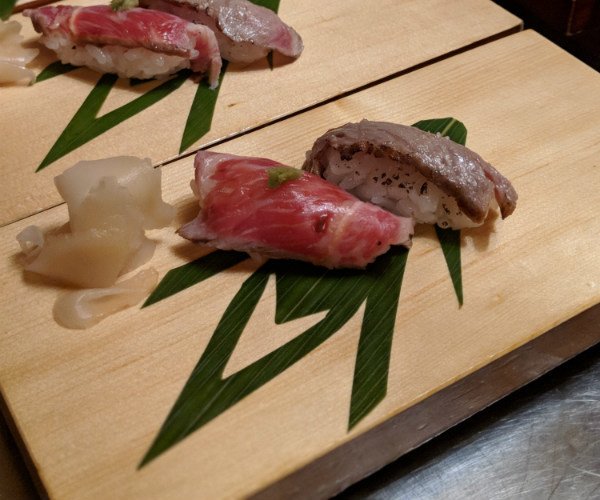 Japan’s emphasis and access to seafood ensures it is some of the freshest you’ll ever eat. I highly recommend trying unagi, which is river eel grilled over charcoal and smothered in barbecue sauce. It’s delicious and harks back to old Japan. You’ll also likely see ramen on many menus, but don’t be fooled, this is not your college-microwave ramen. Although imported from China, Japan has made it all their own: noodles in a salty broth are mixed with a variety of ingredients such as thinly-sliced pork, onion, seaweed, hard-boiled egg, and more.
Japan’s emphasis and access to seafood ensures it is some of the freshest you’ll ever eat. I highly recommend trying unagi, which is river eel grilled over charcoal and smothered in barbecue sauce. It’s delicious and harks back to old Japan. You’ll also likely see ramen on many menus, but don’t be fooled, this is not your college-microwave ramen. Although imported from China, Japan has made it all their own: noodles in a salty broth are mixed with a variety of ingredients such as thinly-sliced pork, onion, seaweed, hard-boiled egg, and more.
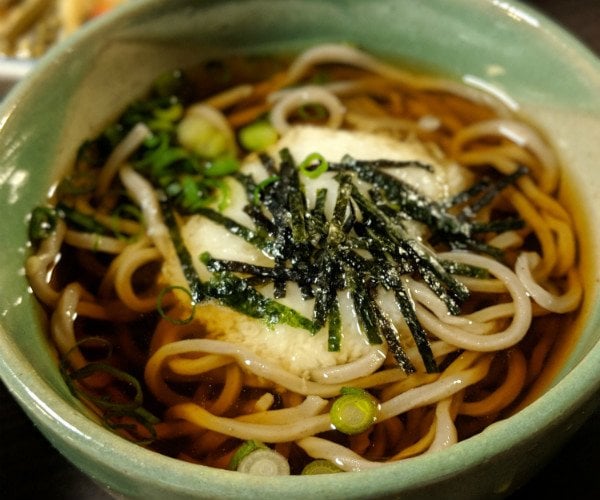 Tea is essential to the Japanese culture. Not only does the country produce high-quality green tea, which is well-known for its many health benefits, but the traditional tea ceremony is a beautiful ritual to witness. It takes years to master, so be sure to find an opportunity to learn about and watch this sacred cultural experience. And don’t forget to savor the fresh brews that await you at hotels and cafes. Even in remote areas, such as along the Nakasendo Trail hiking route, tea houses invite visitors to relax and refuel in a peaceful atmosphere before continuing on their journey.
Tea is essential to the Japanese culture. Not only does the country produce high-quality green tea, which is well-known for its many health benefits, but the traditional tea ceremony is a beautiful ritual to witness. It takes years to master, so be sure to find an opportunity to learn about and watch this sacred cultural experience. And don’t forget to savor the fresh brews that await you at hotels and cafes. Even in remote areas, such as along the Nakasendo Trail hiking route, tea houses invite visitors to relax and refuel in a peaceful atmosphere before continuing on their journey.
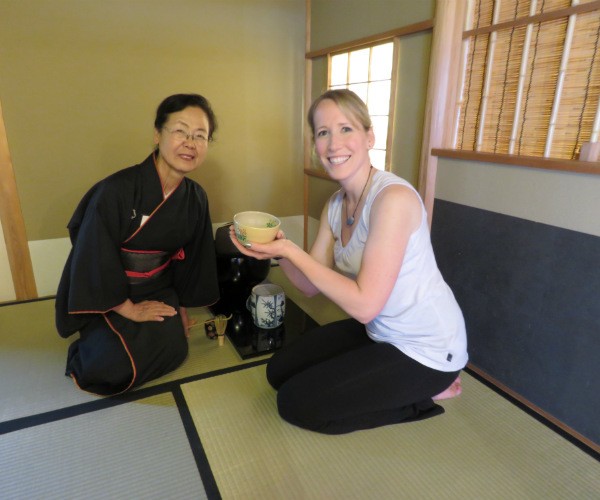 Then there’s sake, Japan’s national beverage. While often called rice wine, sake is actually brewed more like beer. There are two types of sake: ordinary sake (most of the sake produced) or special-designation sake (the premium version). Premium sake is designated by the rice polishing ratio and the addition or absence of added alcohol. Some sake varieties include unpasteurized, undiluted, unfiltered, cloudy, clean, aged, and sweet. Just like tea, sake has it’s very own ceremony and accoutrements. Similar to beer and wine, sake has many different flavor notes, including fruits, floral, herbs, and spices.
Then there’s sake, Japan’s national beverage. While often called rice wine, sake is actually brewed more like beer. There are two types of sake: ordinary sake (most of the sake produced) or special-designation sake (the premium version). Premium sake is designated by the rice polishing ratio and the addition or absence of added alcohol. Some sake varieties include unpasteurized, undiluted, unfiltered, cloudy, clean, aged, and sweet. Just like tea, sake has it’s very own ceremony and accoutrements. Similar to beer and wine, sake has many different flavor notes, including fruits, floral, herbs, and spices.
 Now that your mouth is watering, your thoughts may be turning to sweet things. Japan makes some of the most colorful and artful sweets in the world. Wagashi are usually enjoyed with tea and are typically made from bean paste or matcha (green tea powder). Anmitsu is a traditional dessert with jelly cubes, fresh fruit, red bean paste, and a dark sugar syrup. Taiyaki are bean paste-filled cakes shaped like red snapper fish, which are considered to be good luck. There are also plenty of Western-style desserts, too, from ice cream to sponge cake. Your sweet tooth will definitely be satisfied!
Now that your mouth is watering, your thoughts may be turning to sweet things. Japan makes some of the most colorful and artful sweets in the world. Wagashi are usually enjoyed with tea and are typically made from bean paste or matcha (green tea powder). Anmitsu is a traditional dessert with jelly cubes, fresh fruit, red bean paste, and a dark sugar syrup. Taiyaki are bean paste-filled cakes shaped like red snapper fish, which are considered to be good luck. There are also plenty of Western-style desserts, too, from ice cream to sponge cake. Your sweet tooth will definitely be satisfied!
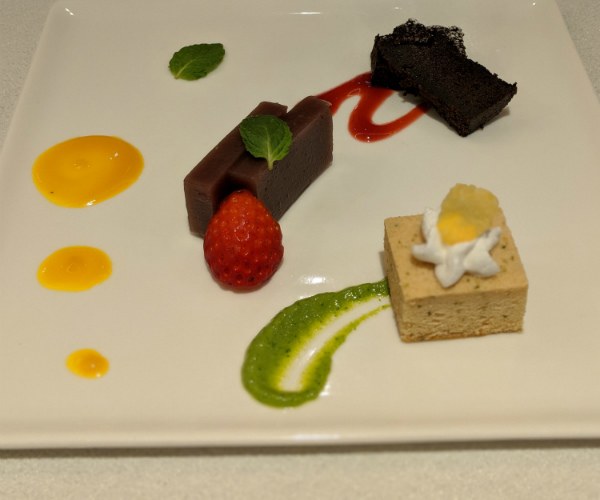 We believe that experiencing local gastronomy is essential to discovering any culture, and we love sharing traditional foods and regional specialties with our guests. Douzo meshiagare! (Enjoy your meal!)
Matt Holmes is the Founder & President of Boundless Journeys. Boundless Journeys is an award-winning tour operator that goes off the beaten path for immersive and authentic travel experiences.
If you would like to be a guest blogger on A Luxury Travel Blog in order to raise your profile, please contact us.
We believe that experiencing local gastronomy is essential to discovering any culture, and we love sharing traditional foods and regional specialties with our guests. Douzo meshiagare! (Enjoy your meal!)
Matt Holmes is the Founder & President of Boundless Journeys. Boundless Journeys is an award-winning tour operator that goes off the beaten path for immersive and authentic travel experiences.
If you would like to be a guest blogger on A Luxury Travel Blog in order to raise your profile, please contact us.Did you enjoy this article?
Receive similar content direct to your inbox.


I’ve always had a love affair with Japanese food. I always wanted to hunt down a new sushi bar long before it was a cool thing to do, somehow some of my friends seemed to get lost between bar and sushi restaurant but I did manage to convert some of them.
I get the impression that Japan’s having a moment with s lot of people suddenly sitting up and taking notice of Japanese food.
Yes, Japan is having a moment. Tourism in increasing, especially beyond the big cities and into the countryside where it’s more genuine and less hustle and bustle.
Britain could learn a lot from the way that Japan makes the most of being surrounded by the seas, it is one great seafood larder. What’s more it is such a good source of protein, fish is a low-fat healthy diet. Sadly you just don’t see as much fish or such a good variety in British shops as you see in Japan even though as a group of islands Beitain has got great access to the sea.
I think Japanese food is going to be flavour of the year. A lot of us are beginning to realise that there’s more to life than meat spuds or pasta and a few token bits of greenery. Even if they are not going fully vegan people are cutting down on their meat and looking for alternatives. We’ve had the Mediterranean diet now maybe we are heading for the Japanese diet?
I anticipate that the Rugby World Cup will give all things Japanese a huge boost. Remember what the Italian football World Cup did for Opera? I think players, commentators and fans will get back home after the World Cup craving for the exciting and healthy food they tried in Japan.
Remember the excitement when Ken Hom told us how to cook authentic Chinese Food back in the day? I think the smart money’s on a Japanese celebrity chef emerging sometime soon.
That would be amazing!
People tell me that sake is an acquired taste. I’ve put in the hours and acquired that taste so no problem!
I am a huge fan of Japanese food. My problem is that I would have problems with sitting on the floor. I haven’t sat cross-legged since junior school days and that was well over half a century ago.
Whenever I think of a dish that originated in Japan, Ramen and Sushi are the two things that first pops into my head. Japan has a wide variety of dishes with noodles and seafood such as Sukiyaki, Robatayaki, Kaiseki Ryori and many more. Aside from that, they also serve dishes with meat such as Gyuntanyaki and Yakinuku. My two favorites are very enticing and it is something that I can eat every day. Don’t forget to try authentic Yakitori and Tonkatsu in your next visit to Japan.
Thanks for the additional suggestions!
“Itadakimasu!” is what I always hear whenever I enter a Japanese restaurant. No doubt Japanese cuisine deserves one spot in the roster of the most delicious food on the planet. It’s in Japan that we can eat the freshest of the freshest seafood ever and I drool just by thinking of sushi, sashimi, and okonomiyaki. Please transport me to Japan now!
I love udon noodles and bamboo shoots, but I’d have to steer clear of fish or sushi, I just can’t stand anything seafood related. There are a couple of ‘mindful tea’ places popping up in the UK based on the Japanese cultural ways of sitting, carefully making and mindfully drinking tea, especially green tea. I would love to actually experience it first hand authentically by going to Japan. It’s the top place on my bucket list!